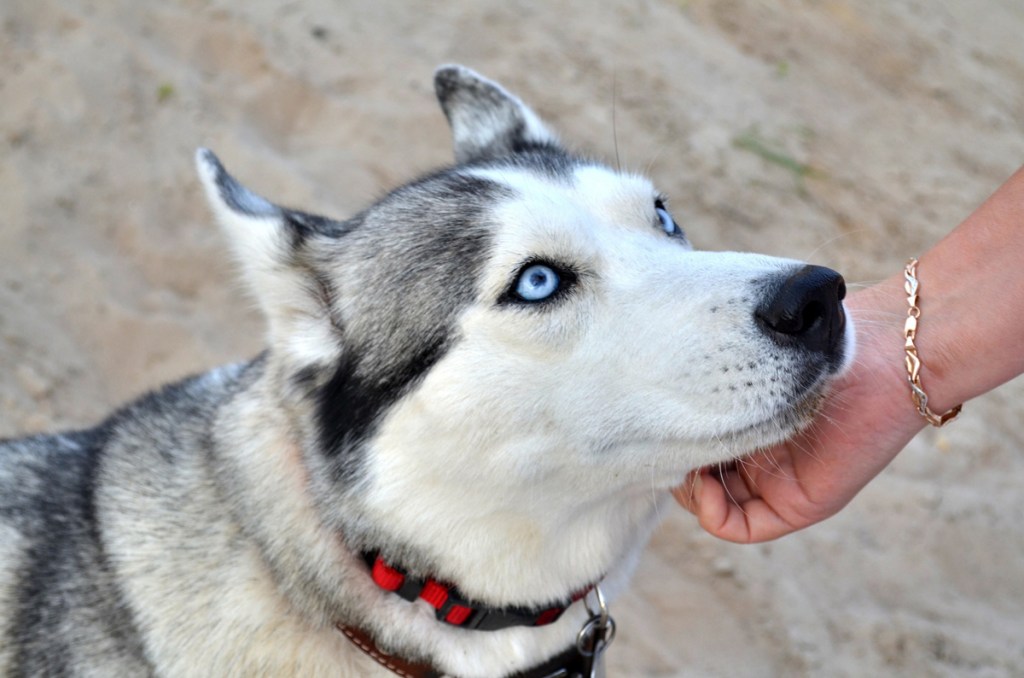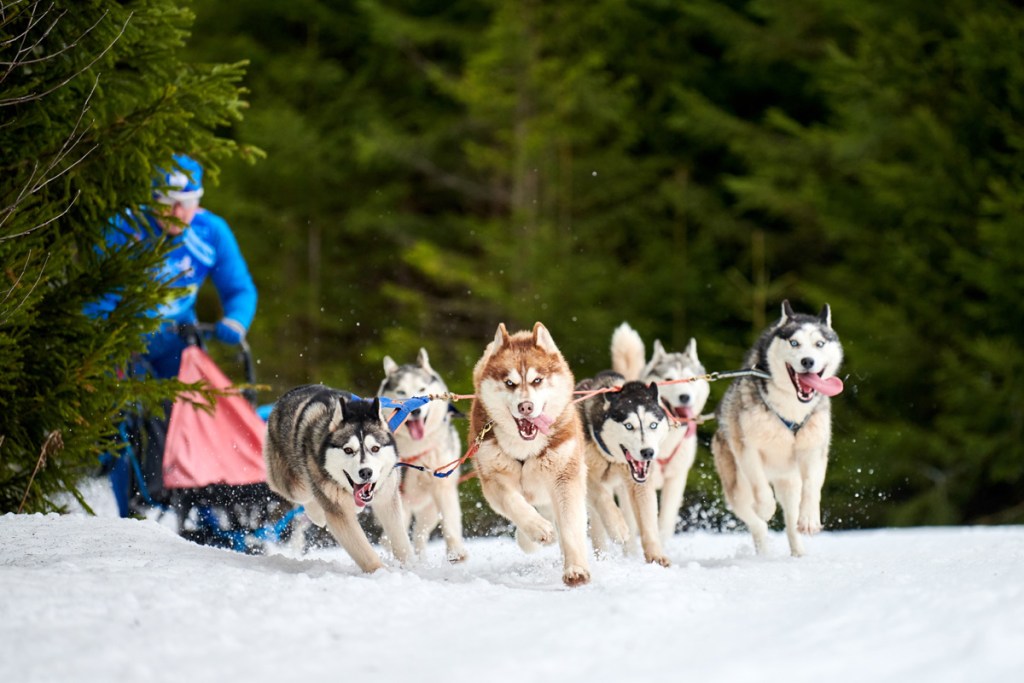There are so many reasons people fall in love with Siberian huskies. They look like wolves, many have stunning blue eyes, and they are mischievous and playful. In addition, these friendly, gentle dogs make wonderful walking, hiking, and running buddies. Read on for some amazing facts you may not know about the awesome Siberian husky.
1. Siberian huskies helped save thousands of lives
In 1925 the city of Nome, Alaska, was struck by a deadly diphtheria epidemic. Unfortunately, shipments of lifesaving serum didn’t arrive before the port closed for the winter. Teams of Siberian huskies came to the rescue, transporting the serum over dangerous terrain to save thousands of lives. A husky named Balto was hailed a hero for leading the team that undertook the last leg of the trip. A statue of Balto erected in Central Park, NY, honors the husky heroes.

2. Huskies have natural protection against the cold
Siberian huskies have double coats to protect them in extreme temperatures; their thick undercoat helps retain heat while their longer outer coat is water-resistant. Their almond-shaped eyes protect them from loose snow and strong sunlight. In addition, huskies have webbed feet that help them move safely over snow and ice, and their beautiful, fluffy tails keep their faces warm when curled up to sleep.
3. Huskies are Houdini dogs
Siberian huskies are notorious for roaming. If you want to see evidence, just visit the Delaware Valley Siberian Husky Rescue on Facebook to see some amazing escapes. According to experts at the rescue, whether from a crate, home, or fenced-in yard, you can never underestimate a husky’s ability to escape.
4. A husky’s nose may change color in the winter
Huskies are among the breeds of dogs that can be affected by what’s commonly called “dog snow nose.” The condition causes a dog’s nose to lighten in color. Black noses, for example, turn to a pink or light brown color. According to veterinary experts, the medical name for the condition is hypopigmentation and it happens most often during the winter or in cold weather climates.
5. Siberian huskies love to talk
Huskies made Vetstreet’s top 10 list of the most talkative dog breeds. Training experts say that huskies talk to show their love and affection. If you’d like to hear them in action, check out the “Hilarious Talking Huskies Compilation” by Newsflare.
6. Huskies are from an ancient lineage
Despite popular belief, the Siberian husky is not a wolf hybrid. Recent DNA studies show that the Siberian husky is among the 14 most ancient breeds recognized by the American Kennel Club (AKC).
7. Siberian huskies served as military dogs
During World War II the U.S. Army recruited Siberian huskies to serve in the Arctic Search and Rescue Unit. These brave dogs went where motorized equipment couldn’t go to search for downed pilots and cargo.
Working history of Siberian huskies
When changing climate forced the Chukchi people of northeastern Asia to expand their hunting grounds, they electively bred dogs to pull sleds. These dogs were bred to have the endurance and stamina to work longer hours in sub-zero temperatures and are the ancestors of today’s Siberian huskies. The Chukchi also used huskies to herd reindeer. Experts at the Siberian Husky Rescue of Florida say that, in addition to working, these dogs served as companions for children and slept indoors with their families.
In the early 1900s, when prospectors started moving into the Alaskan interior, Siberian huskies were used to deliver mail to isolated areas. According to the American Kennel Club, while planes, highways, trucks, and snowmobiles put most sled dogs out of work, some huskies still work pulling sleds in rural communities in Alaska, Canada, and Greenland.
Siberian huskies working as racing dogs
In 1909 Russian fur trader William Goosak entered a team of Siberian huskies in the 400-mile Alaska Sweepstakes race. The dogs were new to the sled racing scene and much smaller than the typical racing dogs. Locals made fun of the newcomers, referring to them as Siberian rats. However, they changed their tune when the huskies took third place in the race. The following year, three teams of huskies competed in the sweepstakes, taking first, second, and fourth places. Soon these powerful dogs became known for their speed and endurance in sled racing.

Can huskies be happy in warm climates?
While Siberian huskies were bred to work in arctic temperatures, they can adapt to warmer climates. Special precautions need to be taken to prevent heatstroke or dehydration. Their coats should not be shaved down in the summer as their thick undercoat helps regulate their body temperature. Like all dogs, huskies need access to water and shade in hot weather. Cooling mats and kiddy pools can be used to help regulate their body temperature. Frequent brushing to remove loose hair helps keep huskies comfortable in the summer. During the warmest parts of the day, they should be kept indoors in air-conditioning.
Without a doubt, the Siberian husky is one of the most strikingly beautiful dog breeds, but it’s also true that they are not ideal pets for everyone. They need constant companionship, require lots of exercise, and are big shedders. And it’s worth repeating that they are the ultimate escape artists. All of that said, in the right home, they do make wonderful, loving companions.
Editors' Recommendations
- 5 surefire ways to keep your dog off your bed and get a good night’s sleep
- 7 dog training podcasts we’re obsessed with
- 4 effective ways to house-train your stubborn little Chihuahua
- Video: Dog befriends bike thief (or why golden retrievers shouldn’t be guard dogs)
- Video: Adorable dog thinks the TV wants to play fetch




